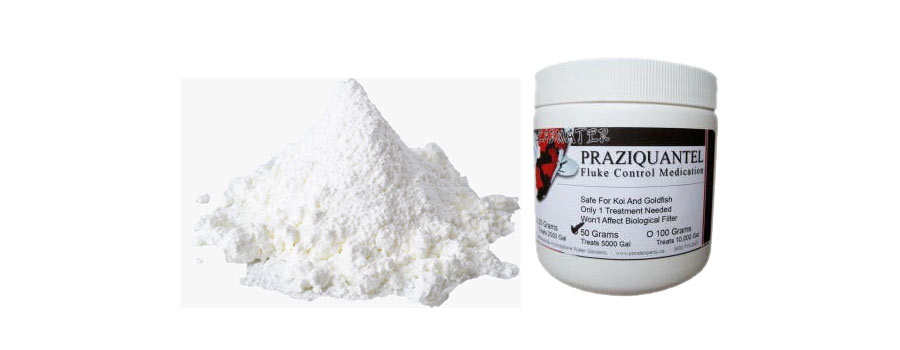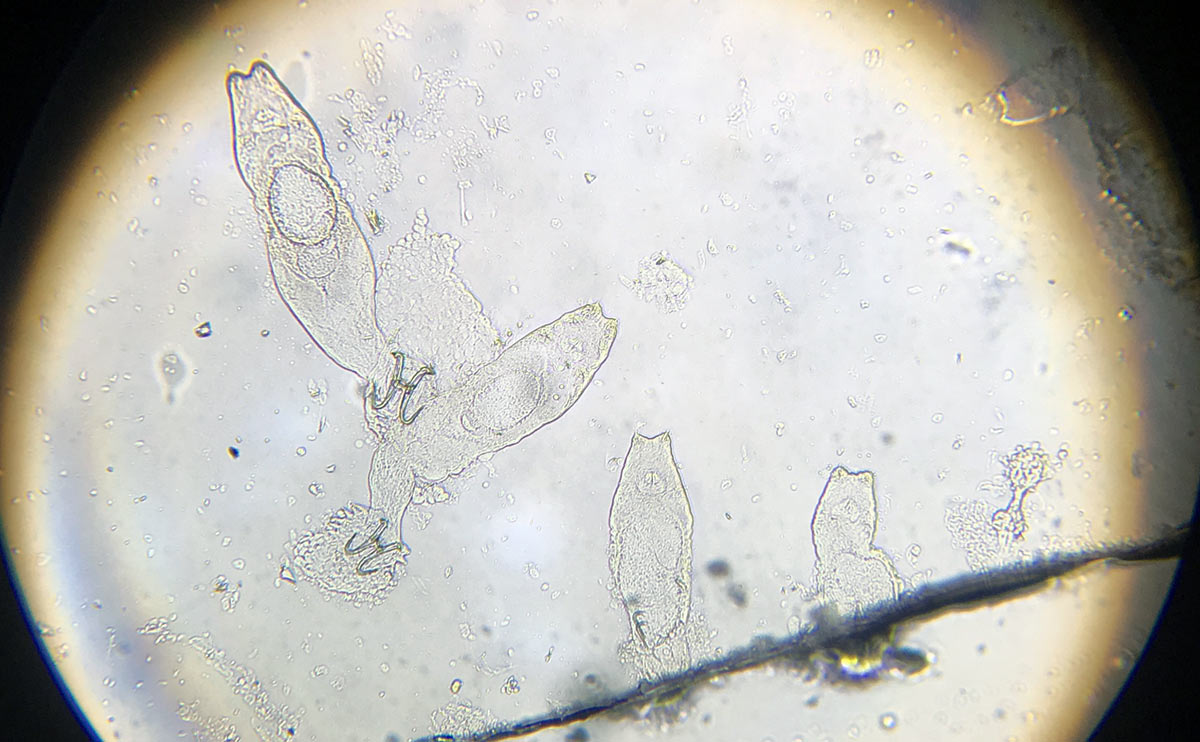
Praziquantel is a white powder that is used primarily as medication for parasitic worm infections in humans and animals. Luckily, it can also be used in ponds, aquaculture and aquariums. Praziquantel (prazi) is a safe and effective treatment for skin flukes (Gyrodactylus sp.) and gill flukes (Dactylogyrus sp.) in ornamental fish such as koi and goldfish, as well as tropical fish commonly kept in aquariums. Plus, it is also effective at treating tapeworms in fish. Unlike some other medications, Prazi is is gentle on fish, is safe to use with plants, and won’t negatively affect your biological filter.

Skin Flukes (Gyrodactylus sp.) shown above
Praziquantel must be dissolved in the water to kill flukes and tapeworms. However, praziquantel is notoriously hard to dissolve in water, making it difficult to effectively treat the fish. If you have used praziquantel before, you know what I mean.
While there are liquid forms of Praziquantel medication, I find that the prazi often precipitates out of solution, and you are usually left with a lot of gooey prazi at the bottom of the container that still needs to be dissolved in the pond water.
Over the years, I tried various methods to dissolve praziquantel, and each method I found, seemed to work better than the last, but I wasn’t satisfied with any of them. With most of these methods, the prazi would only partially dissolve, leaving a lot of powder and clumps of prazi just floating on the surface of the water.
Finally, after many different attempts, I found the best way to dissolve praziquantel in water. While working at a Ripley’s Aquarium, I learned how they administer it. This method is simplest and most effective way to dissolve the prazi quickly and easily, and it can be summed up in one word…….pantyhose. Yes, pantyhose.

A prolonged immersion is what we recommend treating for flukes. Simply put, this means you are going to add the medication to the pond or aquarium, and leave it indefinitely, rather than doing a dip or bath for a shorter amount of time. This is the most effective way to treat flukes in your pond, because if one of your koi has flukes, there is a good chance that several others do as well. Plus, treating the pond will help kill any flukes that are ‘hiding’ in the filter or on the bottom of the pond.
Dosage Rate
Skin Flukes:
For skin flukes, 1 treatment is often enough. Since body flukes reproduce by giving birth to live young, one dose of prazi usually kills both adult and juvenile skin flukes. If you have a particularly bad outbreak, a second treatment is recommended
Gill Flukes:
For body flukes, at least 2 treatments are need, spaced 4 or 5 days apart. Gill flukes reproduce by laying eggs, and like most parasites, their eggs are immune medications. This means that the first treatment will only kill the adult and juvenile flukes, but not the eggs. The second treatment is needed, usually after 4 or 5 days, to kill next generation of flukes once they hatch.